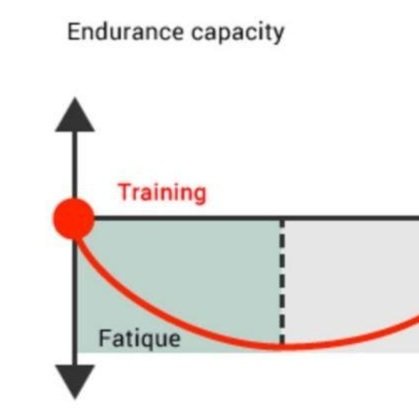
adventure blog
How are you improving climbing power?
A majority of training in recreational climbing is often hangboards, weight-lifting, and some dry-training (speed work). Unfortunately this appears to work only on the ends of the training spectrum. Elite climbers incorporate a significant portion of power into their training. This is known as contrast training. Contrast training is an advanced method for improving both strength and power through combining high-load strength exercises with plyometric movements targeting the same muscle groups. Research shows that heavy loading of a muscle induces a high degree of central nervous stimulation lasting from 5 to 30 minutes.
Deloading in Climbing
Have you ever wondered why you are finally able to send your project after a few days of rest, rather than trying day-after-day?
This trend does not appear to be only exclusive to climbing but in other aspects of performance as well. Researchers in a 2003 study found that approximately two weeks of rest in weight-lifters actually increased their maximum squat and bench press weight.
This seems counterintuitive, is less really more?
FDP Injury and Rehab
Flexor Digitorum Profundus (FDP) is a muscle that extends from our elbows, down our forearms, and attaches to the bones of our fingers via its tendons. The FDP muscle is involved in finger flexion (bending/curling our fingers) making it an extremely important muscle for climbing. Our FDP muscles are involved with a variety of climbing grips (crimps, pinches, slopers, jugs, etc.), and developing FDP strength is essential for climbing performance, but it is also one of the most common sources of hand, finger, or forearm pain and injury in climbers.
Ankle Mobility and Strengthening for Climbers
Without good ankle strength throughout the entire range of motion of the ankle, a climber may be able to get into positions requiring good mobility but will have difficulty moving out of them. Additionally, ankle strength and mobility are important for generating power for dynos, toe hooks, and heel hooks, as well as injury prevention — for example, preventing ankle sprains when landing on a crashpad, or tough heel-toe cams.
Recovery in Climbing (Part I) - 5 Causes of Fatigue
Any serious athlete knows that recovery is just as important as the training itself. If you want to optimize your climbing performance, knowing how to limit fatigue and speed up recovery is as important as knowing how to perform a knee-bar, a finger jam, or drop-knee. Your ability to recover after a hard training session or working on a climbing project depends on numerous factors including age, genetics, and fitness level, but regardless of these factors, there are various tips and strategies that you can use to help enhance the recovery process!
7 Symptoms of “Ice Axe Wrist”
As the weather gets colder, many rock climbers are shifting their focus from their outdoor sport climbing and boulder projects to training and gym climbing. For some climbers, however, the snow and cold weather mark the start of ice climbing season.
One common injury seen among ice climbers is “ice axe wrist”. It is an overuse injury caused by prolonged activity involving flexion and extension of the wrist, especially while holding heavy tools (such as an ice axe). Ice axe wrist is also commonly seen in rowers, weightlifters, and skiers.
7 Warm-Up Exercises for Hiking and Trail Running
We are all in a hurry to get to that next trail! However, us hikers and backpackers are are guilty (at one time or another) for failing to engage in a proper dynamic warm-up.
Warming up your (epic strong) muscles and soft tissues (not the kind you cry into) prior to hiking and backpacking is extremely important for injury prevention. Muscle, tendon, and ligament strains, sprains, and tears are less likely to occur when the body is warmed up.
Let’s take a look and see 7 warm-up exercises for hiking!
What are Pulley Injuries?
Pulley injuries are the most common type of finger injuries among rock climbers. To minimize the impact of a pulley injury on your climbing goals, it is important to understand the anatomy of the pulley system, the mechanism of injury, and how to prevent and treat finger injuries.
Static Stretching vs Dynamic Stretching
Stretching before engaging in your epic adventure (ie: sports and exercise) can help mitigate the risk of injury and optimize athletic performance by preparing your muscles, joints, ligaments, and other soft tissues for upcoming activity and load.
In adventurer’s terms: how you prepare matters!
5 tips for managing and preventing shin splints
Shin splints (medial tibial stress syndrome) is described as pain or discomfort at the front of your lower leg that worsens when running or exercising.
In some cases, the pain may resolve immediately after activity or can easily be managed with ice and rest, however, shin splints can also lead to chronic pain. Although they can be very painful, shin splints are preventable and treatable with proper care.










